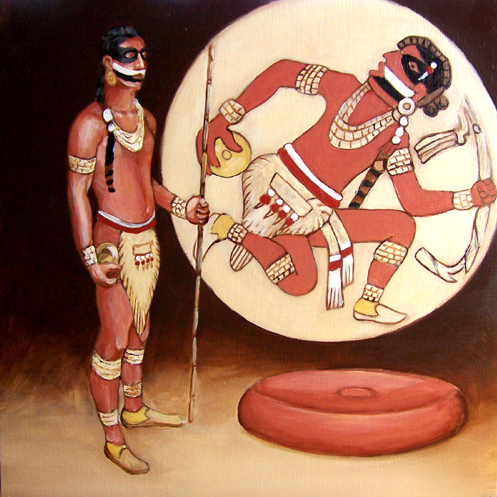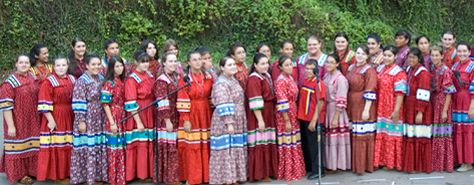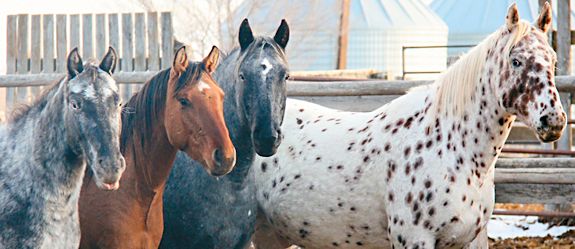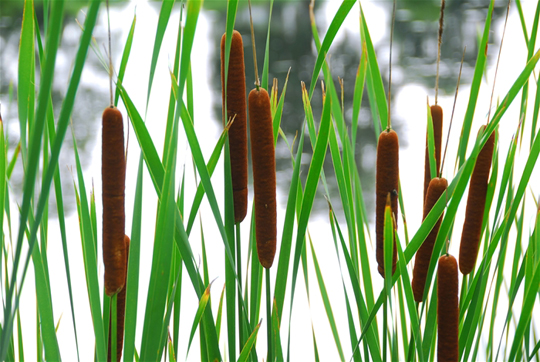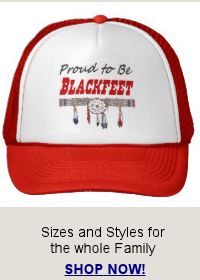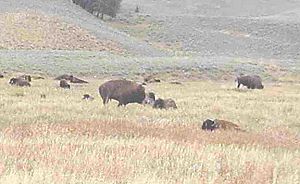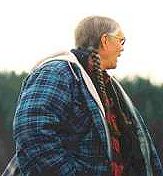Chunkey (also known as chunky, chenco, tchung-kee or the hoop and stick game) is a game of Native American origin. It was played by rolling disc-shaped stones across the ground and throwing spears at them in an attempt to place the spear as close to the stopped stone as possible.
Culture and Tribal Customs
Culture and Tribal Customs
As a Native American scholar of environmental history and religious studies, I am often asked what Native American leaders mean when they say that certain landscapes are “sacred places” or “sacred sites.”
Juaneño Band of Mission Indians Funeral Ceremonies
Before treating upon the subject of their manner of interment, I will just refer to the remedies used for their diseases. They possessed some knowledge of the virtues of certain medicinal herbs, and the external application of them to cutaneous disorders; but for internal diseases, such as fevers, &c., they always resorted to cold baths. For pains in the head, immediate application of cold water was the remedy.
Superstitions of a ridiculous, and most extravagant nature, were found associated with these Indians, and even now, in almost every town, or hamlet, the child’s first education is a belief in their authenticity; and they grow up from infancy familiar with all their fabulous traditions. The effect tends to enervate their physical faculties, and weaken their mental, so that they naturally become a pusillanimous race of people, liable to be deceived, imposed upon, and of course easily influenced by the puplem, and old men, who are their sole instructors.
As on all their feast days, dancing was the principal ceremony of the Juaneño Band of Mission Indians. I will endeavor to describe many of the ludicrous customs attending it. Such was the delight with which they took part in their festivities, that they often continued dancing day and night, and sometimes entire weeks. Their whole heart and soul were wrapped up in the amusement, and hardly a day passed, without some portion of it being devoted to this insipid and monotonous ceremony.
The usual marriage customs of the Juaneño Band of Mission Indians in selecting and obtaining their wives, was as follows:
When one of them was inclined to marry, and having seen one with whom he was particularly pleased, he kept loitering about her place of residence, until opportunity offered to communicate, in secret, the wish of his heart: generally after this style: “I wish to wed with you,” or, “We are to be married;” and the reply of the fair one, invariably, was, “It is well.” “I will inform my parents, and you shall know.” The girl then gave the information to her father and mother, and if the proposal were agreeable, the suitor was admitted to the house as a visitor.
The Instructions the Juaneño Band of Mission Indians Gave to Their Children
One of the difficulties most perplexing to the Indians, was, the rearing and educating their children. They were unacquainted with the arts, excepting those most necessary for their maintenance, and ignorant of all useful knowledge to keep them from idleness; so that their only education consisted in the construction of the bow and arrow, with their peculiar uses, in procuring game and defending themselves from their enemies.
Although, ignorant as they were of the knowledge of the true God, the moral instruction given by parents to their children, was contained in the precepts of Chinigchinich, which were strongly impressed upon their minds, that they might become good, and avoid the fate of the evil.
The temples erected by command of the God Chinigchinich, or the celebrated idolater Ouiamot, were invariably erected in the centre of their towns, and contiguous to the dwelling-place of the, captain, or chief; notwithstanding their houses were scattered about without any particular regard to order, still, they managed to have the location of his house as near the middle as possible.
Chinigchinich is an ethnographic account of the culture and notably religious beliefs of the native Californians in the vicinity of the famous mission San Juan Capistrano. This is the mission where the swallows, legendarily, return every year. There is nothing, however, about the returning swallows in this book. Boscana was one of the few Spanish missionaries who, like Bishop Landa in the Yucatan, actually took an interest in the culture they were destroying.
Boscana was, typically, a bigot and a racist (he describes the Indians as being like monkeys). However, he lived among them for decades and obviously had an inquisitive mind and a talent for observation. While he condemns the practices and beliefs of the indigenous people, he describes them in great detail. Barring a time machine, this is the only first-hand account of mission-era Juaneños we will ever have.
The translator of this treatise, Alfred Robinson, was one of the first Yankees to settle in California.
This story may seem shocking and little sad to some who are romantically inclined to the modern myth about the Tear Dress. The myth is that our women wore this style of dress at the time of the Trail of Tears in 1838-39. That is not true for two reasons.
The Cherokee Tear Dress
22 ViewsThe Cherokee Nation is the only tribe to my knowledge to legislate a specific style of clothing as the official tribal dress. The Cherokees of North Carolina have a completely different style of dress.
The Cherokee Stomp Dance
24 ViewsTo the Creeks, Cherokees and other Southeastern Indians, the Stomp Dance is affiliated with the Green Corn Ceremony.
The term “Stomp Dance” is an English term which refers to the ‘shuffle and stomp’ movements of the dance. In the native Muskogee language the dance is called Opvnkv Haco, which can mean ‘drunken,’ ‘crazy,’ or ‘inspirited’ dance. This usually refers to the exciting, yet meditative effect the Dance and the medicine have on the participants.
The Shawnee marriage dance
22 ViewsAllan W. Eckert, describing the marriage of Blue Jacket and Wabethe, gives this explanation of the Shawnee marriage dance. The marriage dance was held in late evening, while onlookers took seats on the ground in a broad oval before a fire that had been built in the principal clearing of the village. The male participants […]
Ma’amin, the Nez Perce Horse
28 ViewsThe Nez Perce Tribe, historically, were the only known group of people indigenous to North America who, after becoming a society revolving around a horse culture, selectively raised horses that stood up to tests of racing, endurance and stamina resulting in an economy that flourished with the demand for their horses and also resulted in acclaim of legendary proportions throughout the world.
Indian gods, godesses and dieties
22 ViewsThe general characteristics and origins of Native American religion shed light upon the more contemporary sects. But the development of the numerous individual traditions, passed down orally, remains unclear. The sheer number of groups and the diversity of the nuances of belief complicates matters further.
The Navajo people believed that when someone dies, they go to the underworld. Certain precautions must be taken during the burial process to ensure that they don’t return to the world of the living. These visits were to be avoided at all costs, and for this reason, Navajo people were very reluctant to look at a dead body. Contact with the body was limited to only a few individuals.
The Indian Shaker Church Religion
22 ViewsThe Indian Shaker Church is a Christian denomination founded in 1881 by Squaxin shaman John Slocum and his wife Mary Slocum in Washington. The Indian Shaker Church is a unique blend of American Indian, Catholic, and Protestant beliefs and practices. The Indian Shakers are unrelated to the Shakers of New England (United Society of Believers) and are not to be confused with the Native American Church.
Seven Drums Religion (Washat)
31 ViewsThe Seven Drums Religion has many names. Called wáashat (Washat, meaning “dance”) or waasaní (Washani, “dancers” or “worship”) in the Sahaptin language of the Columbia Plateau, it is also known as the Sacred Dance Religion, the Longhouse Religion, or simply the Indian religion.
Stick Ball games were part of the culture of many tribes, and were not only an important spiritual aspect in ceremonies, but were also used to settle disputes without having a full out war. In this 16 minute video, learn how stickball games were played, the part they played in the Choctaw tribal culture, the rules of the game, and how the equipment was made.
The Mandan Buffalo Dance
22 ViewsThe most exciting event of the year was the festival of the Buffalo Dance. Eight men participated, wearing buffalo skins on their backs and painting themselves black, red, and white. Dancers endeavoured to imitate the buffalo on the prairie.
I-Lon-schka Osage Ceremony
22 ViewsScores of Osage dancers participate in the tribe’s annual I-Lon-schka each June, what is also known as Osage ceremonials. A drum-giving ceremony and dancing are the glue that holds this fiercely traditional society together.
Native American Church
23 ViewsThe story of the Native American Church is one of cultural survival, social adaptation, and moral revitalization. On October 10, 1918, an intertribal coalition of Peyotists achieved legal definition for their religion through the incorporation of the Native American Church of Oklahoma.
Pawnee Beliefs
22 ViewsThe Pawnee believe there are many powers in the world. At the creation of the world, lesser powers were made, because Tira’wa-tius, the Mighty Power, could not come near to man, or be seen or felt by him. These lesser powers dwell in the great circle of the sky.
Cattails can be found virtually anywhere in the wilderness where there is a water source and are a supermarket full of food and uses that can help ensure your survival.
The Camas lily was used by Native Americans for medicinal purposes and its root bulbs were collected to make bread, or roasted like a potato.
Mayan Spiritual Mythology
22 ViewsHere is a list, hopefully reasonably complete, of known Mayan God-forms. The information here is necessarily brief; a full accounting of all these entities would be a massive book in its own right.
Haudenosaunee Spiritual Mythology
22 ViewsThese Haudenosaunee spiritual concepts are intended as a general reference guide for students of Eastern Woodland mythology. The format will consist of a Name (and occasionally a translation in the Seneca or Seneca-Mingo dialects) with a description of the divinity.
Lakota Spiritual Mythology
25 ViewsThese Lakota spiritual concepts are intended as a general reference guide for students of Plains Indian mythology. The format will consist of a Name (and occasionally a translation) with a description of the divinity.
Mountain Spirits
22 ViewsThe Mountain Spirits are a race of supernaturals who dwell within the interiors of many mountains, according to Chiricahua Apache belief.
Native American super foods
22 ViewsOn American Indian reservations, the traditional diet of wild plants and game for food is increasingly being replaced with a far less healthful diet of predominantly high-carb, high-sugar foods.
Yup’ik and Cup’ik Culture
22 Views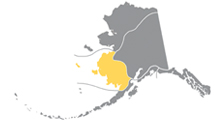 The southwest Alaska Natives are named after the two main dialects of the Yup’ik language, known as Yup’ik and Cup’ik. The estimated population, at the time of contact, was: Nunivak 500, Yukon-Kuskokwim 13,000 and Bristol Bay 3,000. The Yup’ik and Cup’ik still depend upon subsistence fishing, hunting and gathering for food.
The southwest Alaska Natives are named after the two main dialects of the Yup’ik language, known as Yup’ik and Cup’ik. The estimated population, at the time of contact, was: Nunivak 500, Yukon-Kuskokwim 13,000 and Bristol Bay 3,000. The Yup’ik and Cup’ik still depend upon subsistence fishing, hunting and gathering for food.
Omaha Sacred Pole
22 ViewsThe Omaha revere an ancient Sacred Pole, from before the time of their migration to the Missouri, made of cottonwood. It is called Umoⁿ’hoⁿ’ti (meaning “The Real Omaha”), and considered to be a person. It was kept in a Sacred Tent in the center of the village, which only men who were members of the Holy Society could enter.
The Standing People (trees) each have different qualities associated with their species. Here are some of the meanings associated with trees.
Tipi Etiquette
22 ViewsIf the door is open, a friend may enter the tipi directly. But if it is closed, he should announce his presence and wait for the owner to invite him to come in.
Horse meat is not only a delicacy in Europe and China; it’s also one here. Since at least the 1500s, Navajos have harvested and consumed horses.
This is according to Tim Begay, a Navajo Cultural Specialist with the Navajo Historic Preservation Department, who added that horse consumption in the Navajo Nation was and is mostly a way to combat the common cold and flu, and an alternative food source for families during the winter months.
Being closely tied to nature and all living things, the Oglala Lakota believed strongly in animal powers and the supernatural. Observance of animal behavior was incorporated into everyday life, creating a belief system that protected all who sought their animal powers. Learn about the spiritual powers attributed to animals by the Oglala Sioux and see how that influenced their daily lives.
The rhythm of the drum signifies the heartbeat of the people. Singing and dancing are integral features of the pow wow celebration, expressions of the spirit of the people. We get together at a powwow to celebrate and to give thanks to the Creator for the good that we’ve had in the past. We say healing prayers as we dance.
The Washoe Indians were hunter – gatherers from the arid Great Basin Region. The Washoe women gathered plants for food and medicinal purposes. Some were eaten as soon as they were collected. Others were prepared for winter use. Up to 70% of the Washoe diet came from wild plants. These included nearly 200 species. Some of the most common were:
Blackfeet religion and spirituality
22 ViewsThe Blackfeet Creator is Na’pi (Old Man). This is the word used to indicate any old man, though its meaning is usually loosely given as white. An analysis of the word Na’pi, however, shows it to be compounded of the word Ni’nah (man), and the particle a’pi, which expresses a color and which is never used by itself, but always in combination with some other word.
The Blackfeet word for white is Ksik-si-num’ while a’pi, though also conveying the idea of whiteness, actually describes the tint seen in the early morning light when it first appears in the east. The dawn is not a pure white, but has a faint cast of yellow. Na’pi, therefore, would seem to mean ‘dawn-light-color-man,’ or ‘man-yellowish-white.’ This is also the color of many old men’s hair.
The Little Traverse Bay Bands of Odawa Indians are now the the third Native American tribe to legalize same-sex marriage.
Christmas Traditions at Taos Pueblo
22 ViewsPeople begin gathering as the last rays of sunlight move their way up the ancient adobe structures. These aren’t just tribal members. We’re talking people from town, all over the region, even some from foreign countries.
The bonfires around the village are lit. As darkness begins to fall, the Vespers Mass in the San Geronimo Church is concluded and the Christmas Eve procession begins.
Question:
I am writting a short story for school about the relationship Sioux Indians had with their horses in 1867. Is there any further information you can provide for me? I’ve read that Sioux Indians thought of curly horses as sacred. Why is this? What type of indian names did the Sioux Indians have? What were medicine men like? What were the Sioux Indians’ villages like? Thank-you for your help.
~Submitted by Leah
QUESTION:
Are there any areas in Kentucky that are considered sacred ground?
~Submitted by Brooks D.
The Apache Sunrise Ceremony reinacts the legend of the first Apache woman. In the legend, White Painted Woman (also known as Esdzanadehe, and Changing Woman) survives the great Flood in an abalone shell, then wanders the land as the waters recede. Atop a mountain, she is impregnated by the sun, and gives birth of a son, Killer of Enemies. Soon afterwards, she is impregnated by the Rain, and gives birth to Son of Water.
A 200-acre wooded site west of Tisch Mills guards its secrets well. Maybe that’s what its original inhabitants intended.But for historian Bruce Vandervest and several other investigators, the site, confirmed to be a sacred Native American burial ground, continues to draw them back in their determination to find out more: a Viking ship also may be part of the find.
AUTHOR: Anju Kaur Desiree Shelley’s family has observed Thanksgiving for generations, but that doesn’t mean she doesn’t understand the protests of fellow Indians who don’t. A native of Baltimore, Shelley has roots in the Monacan tribe of Virginia. Her father is part Monacan, a tribe that was “Christianized” shortly after the Jamestown colonization in the […]
Many days passed before the joy of that day settled deeply into my heart and I could move forward to thinking on the realities of the present situation of the buffalo on our People.
The senseless slaughter of 60 million buffalo brought the herds to the point of extinction.
There was no reverence held for the sacred, life-giving buffalo. These creatures were nothing more than money in pockets and an insane “sport” to people who shot them for no purpose other than target practice. There was no honor and no thanks given for the taken life and the buffalo were left to rot beneath the sun.
What the buffalo mean to our people
22 ViewsTime never stops and is always moving us forward and through the changes of seasons. Time stands as an unforgiving taskmaster that regulates the passage through eternal tides.
The Mother Blessingway Ceremony
22 ViewsA Mother Blessing is one form of the Navajo Blessingway ceremony. It is a ritual for the expectant mother. A Mother Blessingway is a gathering of only women who get together, tell (positive) birth stories, give the expectant mother emotional support and pamper her a bit (brush her hair, wash her feet, massage her). The […]
Native Alaskan hunters have found part of a 19th century weapon embedded in the shoulder of a bowhead whale, leading scientists to believe the animal was wounded in a hunt almost 120 years ago.
The conical bomb fragment measuring almost nine centimeters long (3.5 inches long) was embedded in the shoulder blade of the whale killed last month, said John Bockstoce from the New Bedford Whaling Museum in Massachusetts.
